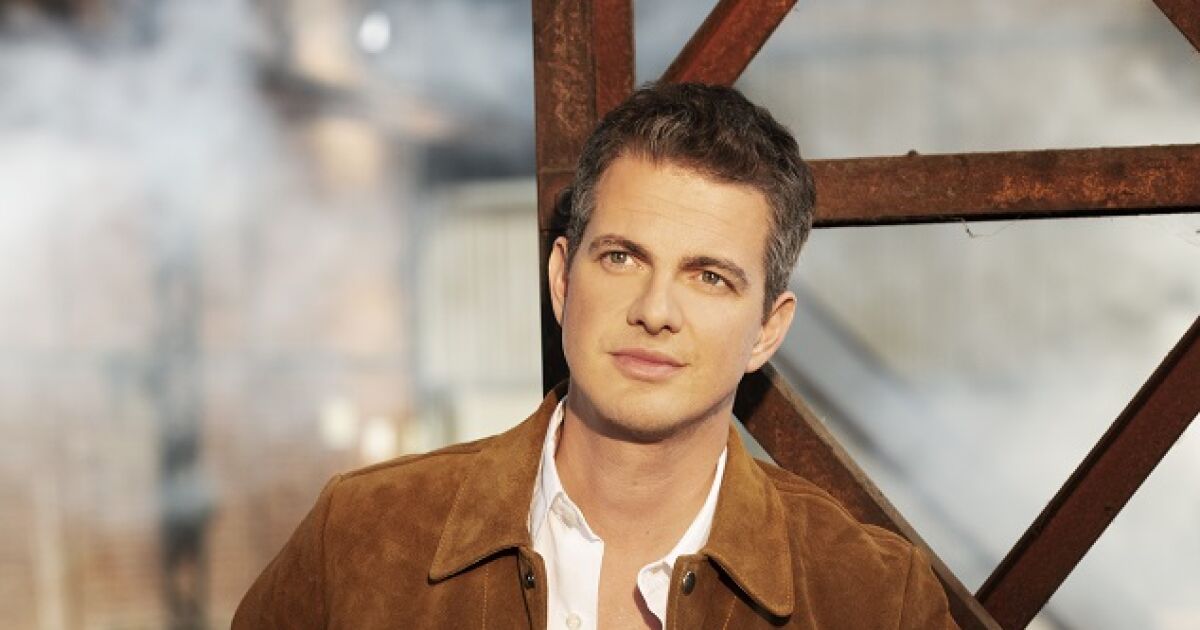
Review: French countertenor Philippe Jarusky shines at San Diego Early Music Society’s 40th season opener
The San Diego Early Music Society kicked off its 40th season with a wonderful concert Sunday night. French countertenor Philippe Zharovsky, accompanied by Ensemble Artaserse, wowed a sold-out crowd at the Church of St. James by the Sea in La Jolla with a performance of baroque opera and instrumental music that was nothing short of magnificent.
Jarauski’s early recordings date back to around 2004 and immediately won him early music fans thanks to his nimble athleticism and stratospheric vocal range. Sunday’s concert, which his fans have been anticipating for decades, was an expert tour of Italian baroque opera and its several orbiting genres — sonata, symphony and concerto.
The concert was cleverly divided into two parts, with the first half occupied by composers known mainly to opera connoisseurs, although the quality of the selections and their performance made an argument for their future acquaintance.
For example, Giovanni Ferrandini’s instrumental symphony — diminutive in size but rich in brilliant string text — was a fine introduction to Ensemble Artaserse’s ability to dart and move, changing direction, articulation and tempo on a dime and in perfect unison. Artaserse is a bold baroque-era instrumental band that plays bows and natural strings, unafraid to bend timbre and intonation for expressiveness.
Johann José’s Trio Sonata also showed that the rhetorical and dramatic tropes underlying eighteenth-century opera were no less operative in its instrumental music; elements of dance and established categories of affect are woven into the fabric of most Baroque compositions, which must be unraveled by musicians and music lovers who know a complex system of codes. Artaserse selected just the right musical elements and gestures to introduce and illuminate this profound language even for casual listeners in the audience.
However, the audience came precisely for Yarovsky’s singing. While his vocal pyrotechnics made him justly famous, to this he added interpretive scope and an ability to control dramatic and emotional intensity and tempo. His reading of the recitative and José’s two arias faded as the opening symphony ended, setting in motion a vivid emotional arc that lasted throughout the concert. The intuitive and natural combination of his voice with the ensemble he co-founded in 2002 is magic: you can hear the decades of intimacy that have created a perfect machine from the union of his singing and instruments with all the players attuned to the clear lyrics and their meanings.
Opera changed Baroque music. While its popularity has never waned, it could take a refresher course like the arias of Ferrandini and Niccolò Piccini to remind us of the genre’s revolutionary dramatic possibilities. These pieces are filled with “textual painting,” a musical technique in which the musical means imitate ideas from the text, as in Ferrandini’s aria “Gelido in ogni vena,” or “like ice in every vein,” whose glacial pace and repetition are relentless gestures strings remind Vivaldi’s “Winter” concerto. Jarowski’s musicianship is as intelligent as it is athletic, and his readings were as much theater as they were music.
More familiar names were heard in the second half. Although born in Germany, Handel traveled and studied in Italy, and finally met with such success and admiration in England that he anglicized his name, settled, and was finally buried in Westminster Abbey. Bach was no international, Handel had to master and expand operatic forms, creating some of the most beloved arias of the Baroque. His gift for earthy, humane melody abounds in his aria “Se parla nel mio cor,” which gave an appreciative audience the early Jarowski they had come for, with virtuoso melismas and grand, ornamented cadences. But the popular “Cara sposa” showed Yarovsky’s maturity and his new gift to convey the most delicate and intimate feelings that opera can offer.
In the old chestnut, Stravinsky had to say of Vivaldi: “Did he write 500 concertos, or did he write one concerto 500 times?” This says as much about the impoverishment of early musical practice at mid-century as it does about Vivaldi, whose instrumental works in the right hands are expressive and intuitive like almost no one else’s. Artaserse’s reading of his String Concerto RV 156 showed how violent and even transgressive Vivaldi’s instrumental text can be. The two arias revealed different sides of Vivaldi’s vocal work: “Gelido in ogni vena” (using virtually the same text as Ferrandini’s earlier aria) was evocative, programmatic, even terrifying, while “Se in ogni guardo” was joyous and dazzling, revealing an impossible technique that made Jarowski famous all over the world.
It was a huge evening of music. The audience was treated to no less than three encores of favorite works by Handel and Vivaldi, each more winning than the last, from Vivaldi’s Sento in seno ch’in pioggia di lagrime, performed by the ensemble in full pizzicato, to Handel’s very dear Lascia ch ‘io pianga’, a simple benediction to send the enraptured but fed audience home.
Schulze is a freelance writer.

